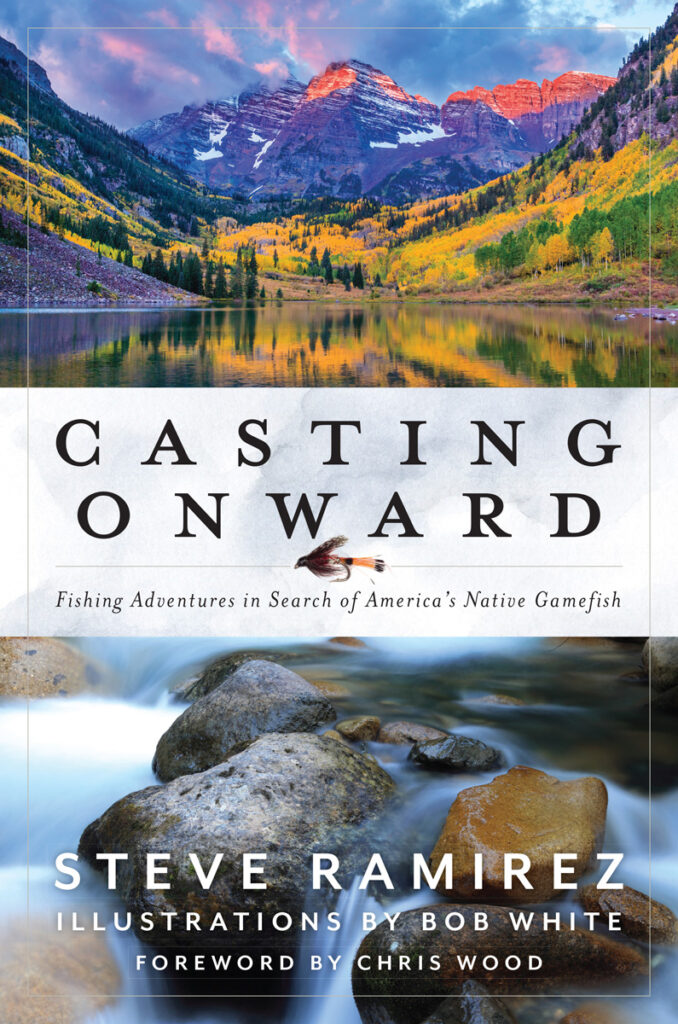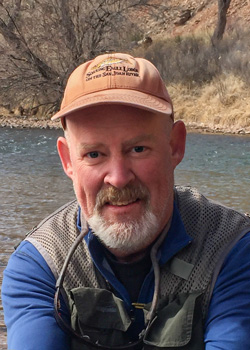
In the world of today—200,000 years into human evolution and a couple centuries into the Industrial Age—few living beings can embody the concept of pristine Nature like native fish. We have shuffled animal and plant species around the globe and caused many others to go extinct. So, it’s pretty special to know that if you want the story of what a place used to be like before modern humanity messed with it, there might be a native fish that can tell it to you.
Such is the premise of Casting Onward, a book by Steve Ramirez chronicling the author’s journey across America in search of native gamefish. A certified master naturalist, Ramirez describes the unique features of each species’ ecosystem and elucidates the threats and perils facing these environments. These accounts are in the format of the everyday fishing trip, wherein Ramirez hits the water with people familiar with the fish in question. Each chapter features a different fish and fishing buddy. Full disclosure: I accompany him in one chapter.
This book is a gift to the hopeless fish geek. We meet northern pike and muskies, striped, Guadalupe, and smallmouth bass, redfish on the Gulf Coast of Texas, bluefish near Cape Cod, sunfish, and several forms of cutthroat trout throughout the Rocky Mountains. Ramirez takes us to the original home of the brook trout (and no, brookies are definitely NOT native to Cabresto Creek). I was generally glad for the thorough treatment of the southwestern trout species—Gila and Apache trout—that have managed somehow to eke out an existence in the hot and dry landscapes of southern New Mexico and Arizona.
I do wish Ramirez had written a chapter on the rainbow trout. Common though it is throughout the world, its native domain is the Pacific Rim from California around to Japan, and in aboriginal form, it’s something to behold. Still, given how much airplane and windshield time the author already invested in this enjoyable journey, I’m grateful to have learned about a fish like the longnose gar.
Importantly, Casting Onward reminds the reader that, in addition to natural evolutionary hurdles these fish have cleared, they are currently under assault by new threats like pollution, habitat loss, climate disruption, over-fishing, and competition with non-native fish. He makes clear the urgency of recovering native fish.
As I mentioned earlier, I accompanied Ramirez in one chapter. In it we fished for Rio Grande cutthroat trout on Jack’s Creek near Pecos as well as Questa’s own Columbine Creek. Hanging out with someone writing a book on something so near and dear to me had a sobering effect; surrounded by spruce, aspen, chipmunks, and piñon jays, we could have been anywhere else in the Rockies. It was the type of fish we caught and nothing else that placed us in New Mexico, in the Rio Grande basin to be exact.
The fact that Alamitos Creek, a wonderful cutthroat stream, has been chewed up by the Hermits Peak wildfire is a painful pill to swallow. The fact that Columbine—and Cabresto, Rio Chiquito, and other Rio tributaries—could meet the same fate (or pass over to generic brown trout dominance) is a dagger to our hearts. One after another, unique natural areas are becoming homogenized and altered permanently, which speaks to the importance of this book. Not only does Steve Ramirez show us a native fish-eye view of the world we live in, he proposes, and convincingly, that losing that view would not be OK.




